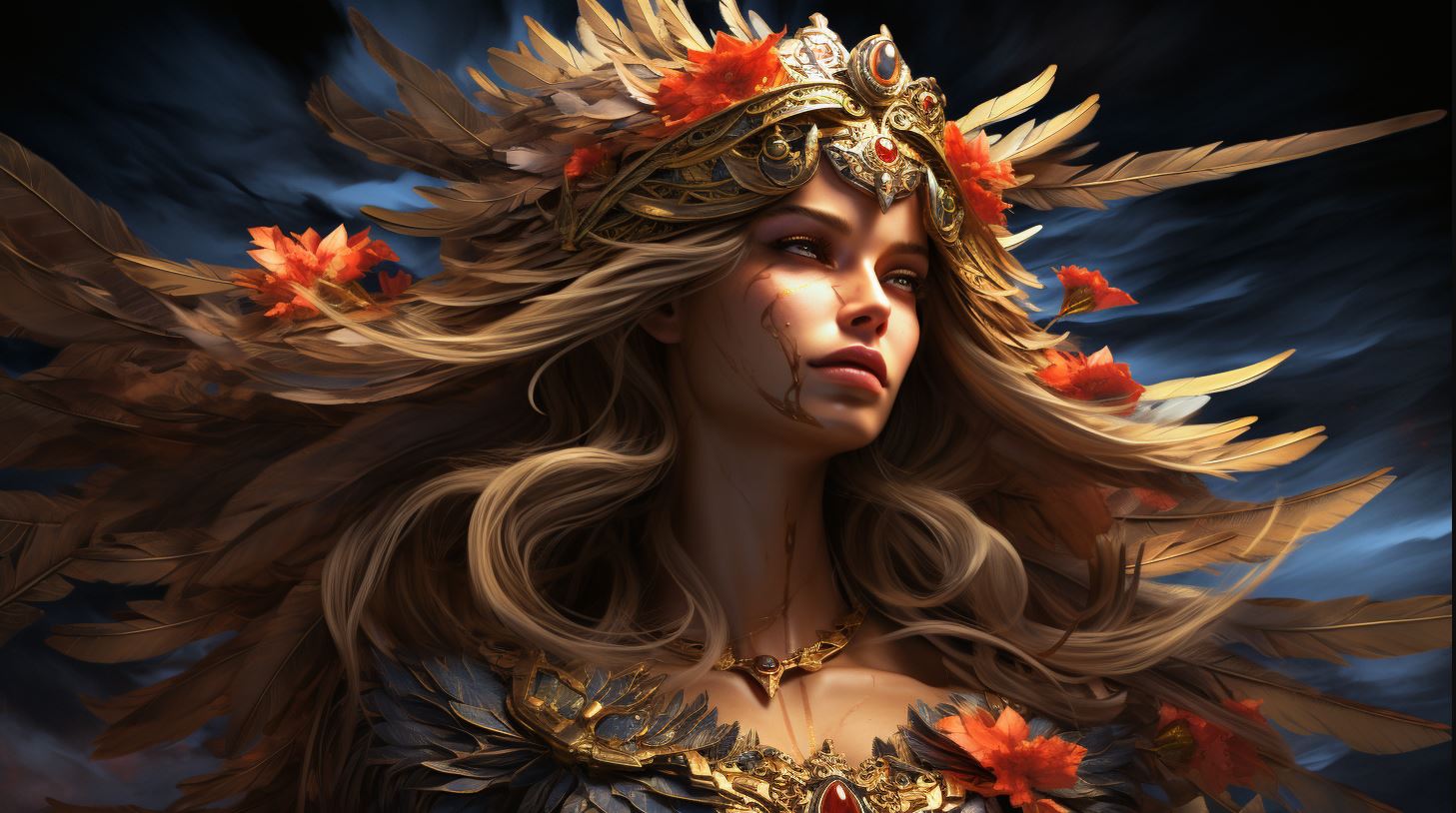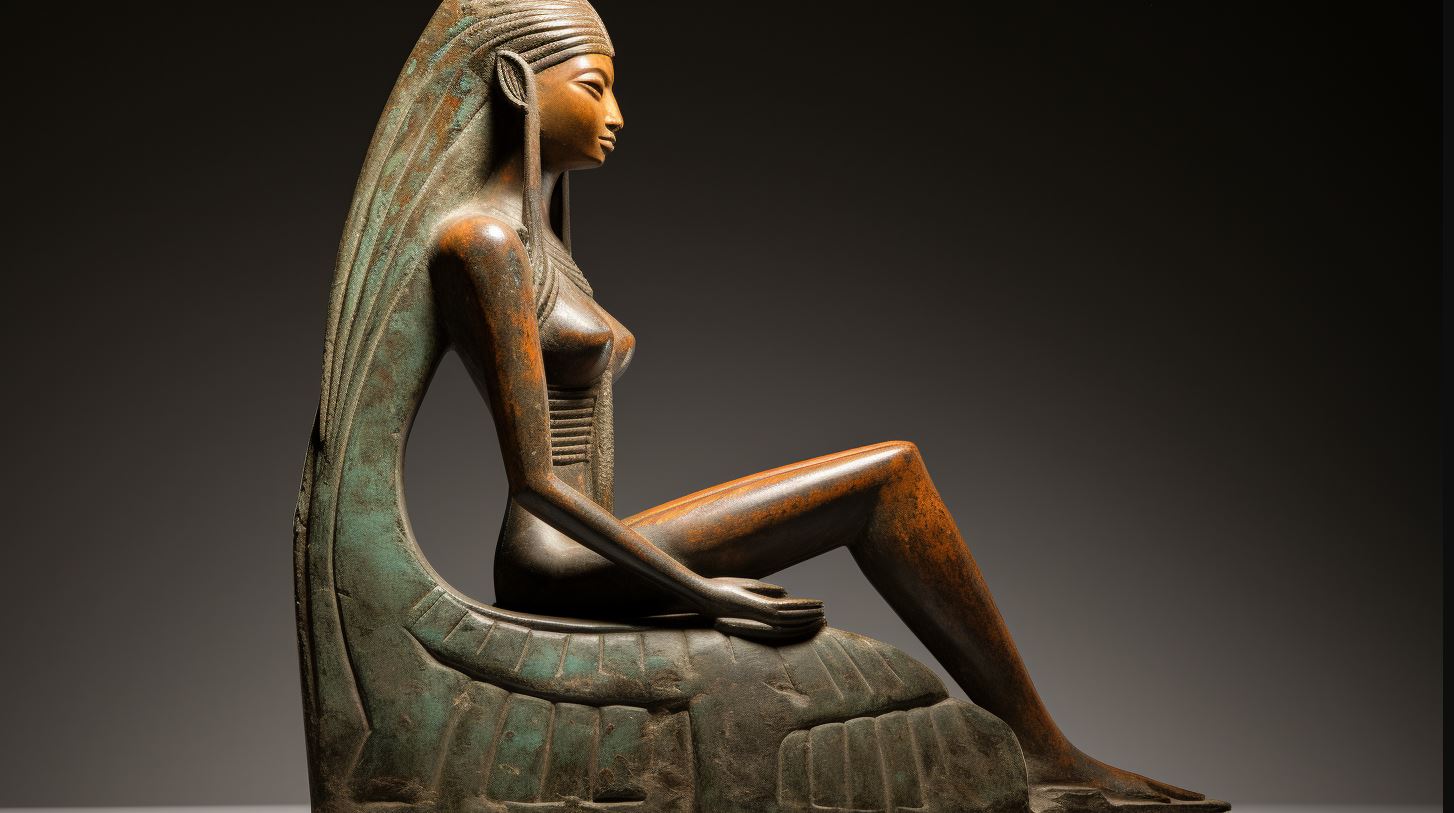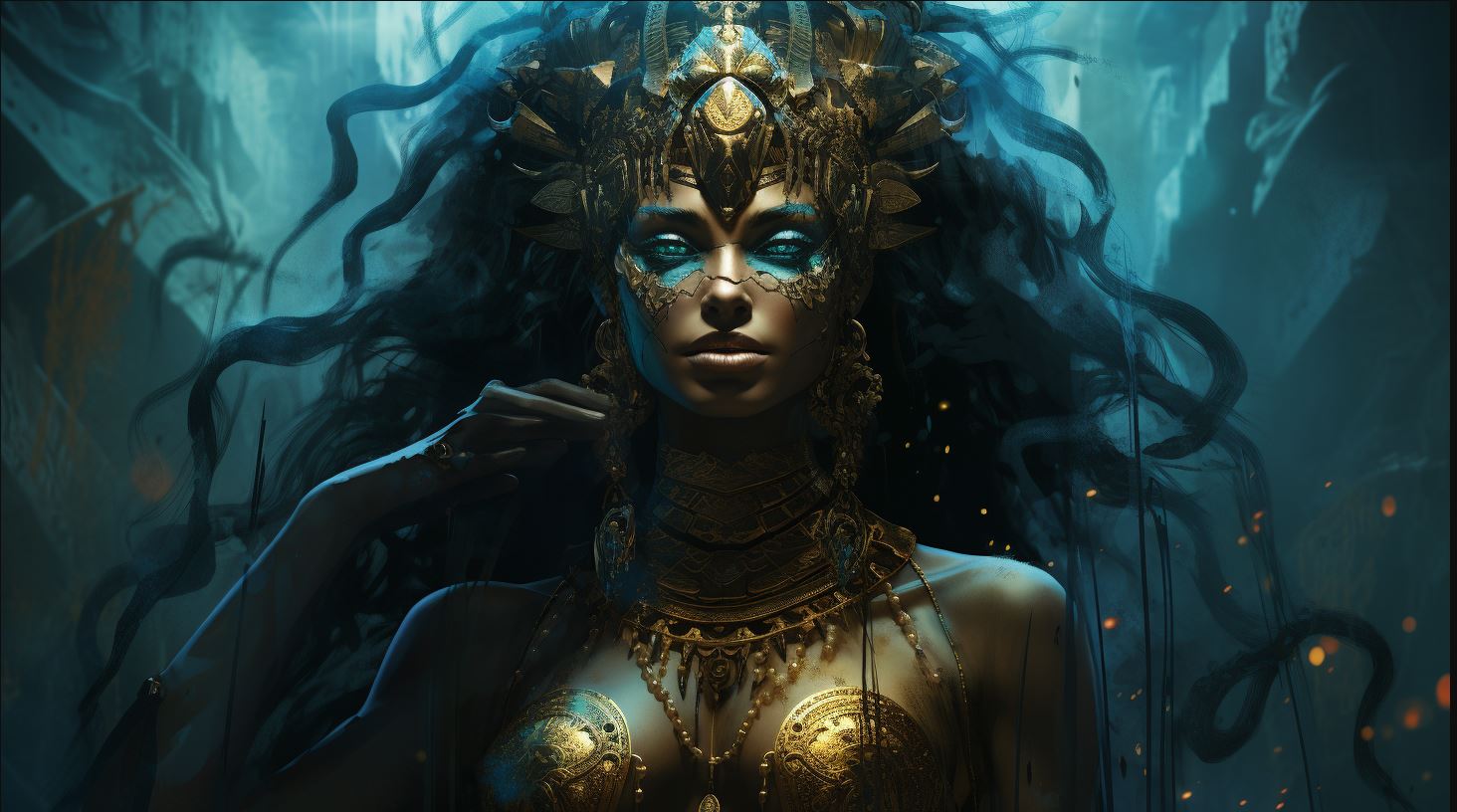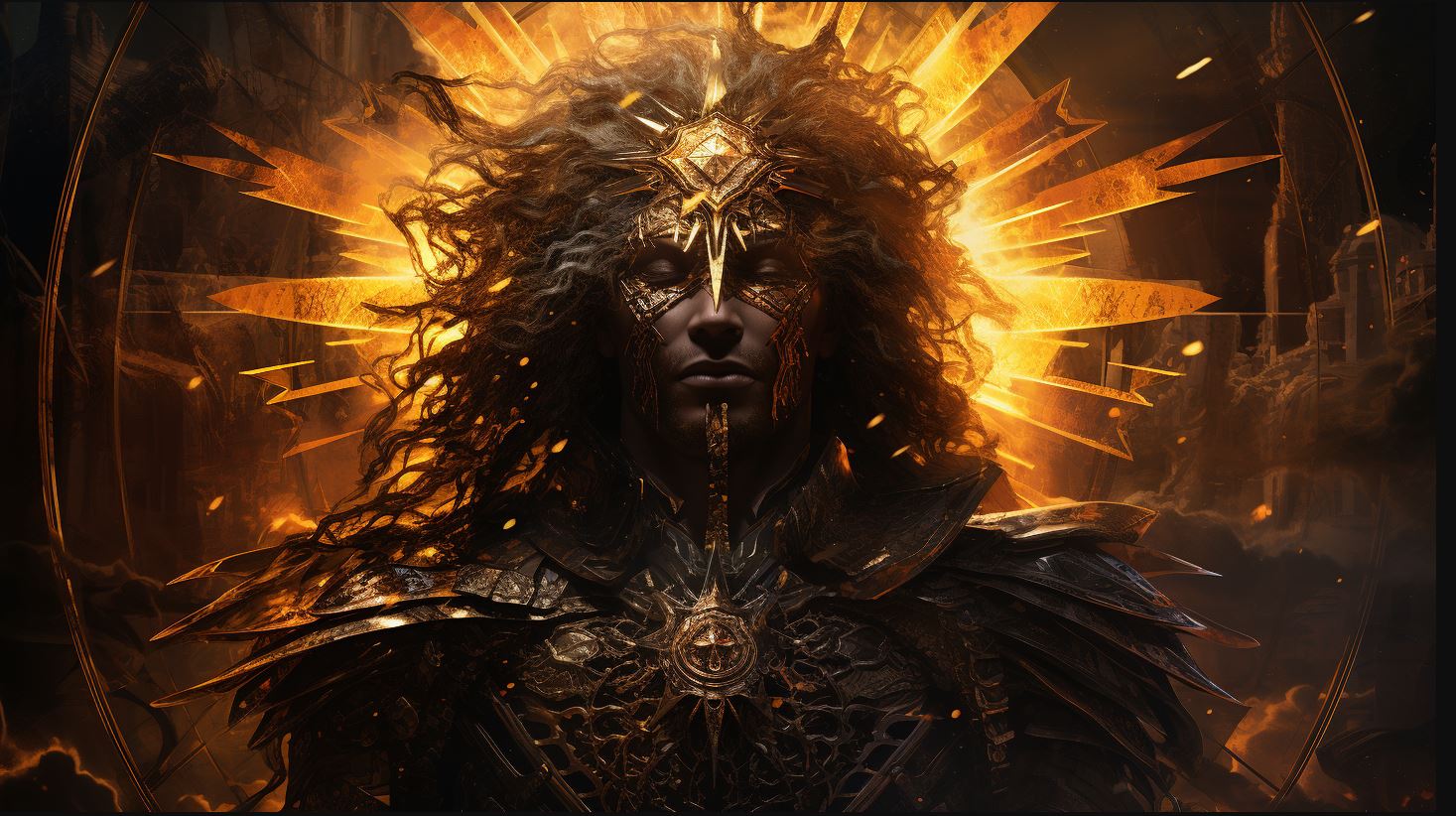Ishara Goddess: Unveiling the Ancient Power of the Northern Syrian Deity
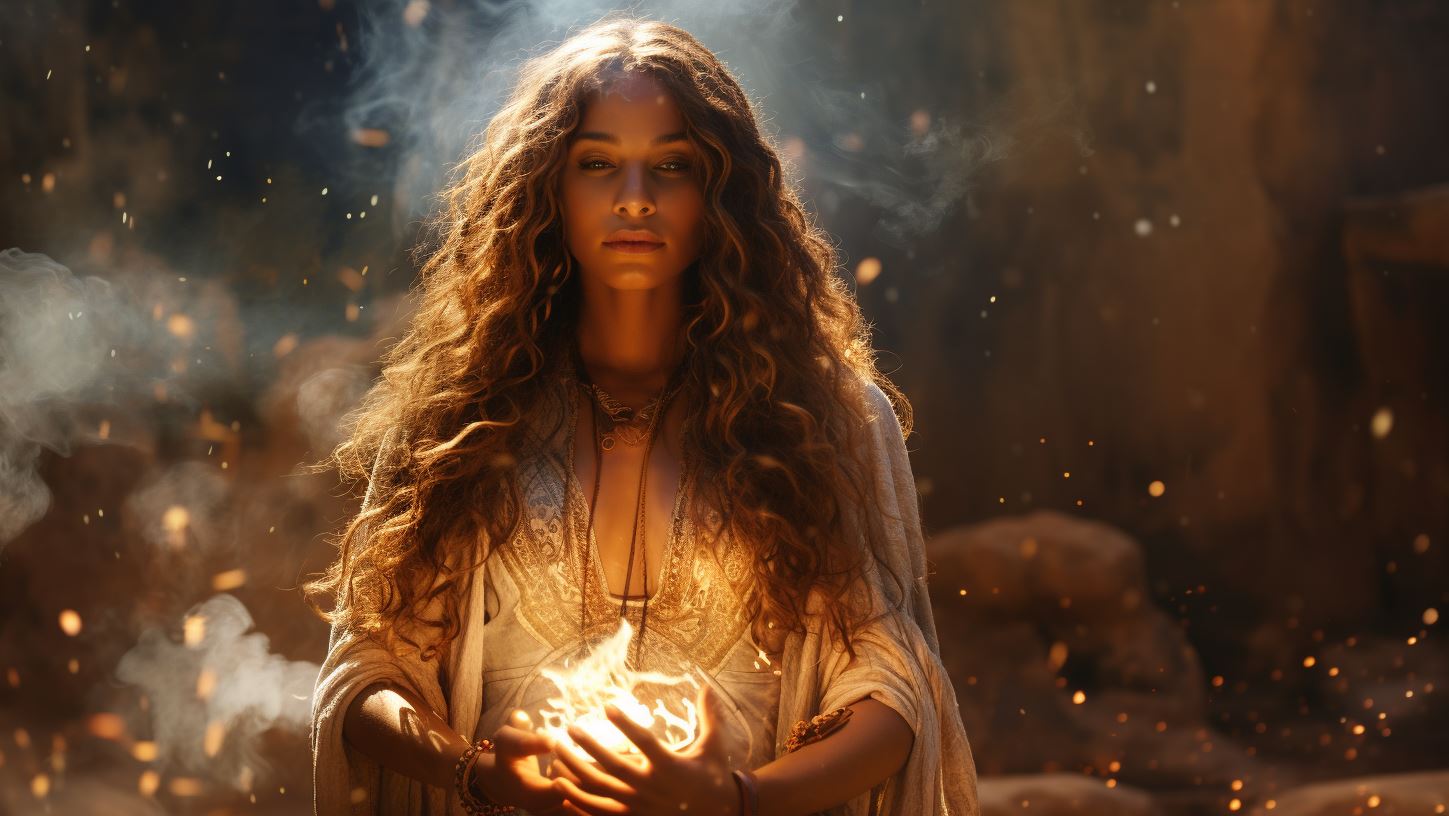
The goddess Ishara originated in northern Syria and was worshipped in Ebla and other settlements. Ishara’s presence is attested in Hurrian and Mesopotamian texts, playing a significant role in the Hurrian pantheon.
She is associated with love, fertility, and healing, and her symbolism and iconography are well-documented. Ishara’s worship practices, including rituals and theophoric names, reflect her influence on the royal family. Her enduring legacy can be seen in personal names from the ancient Near East, and she has connections and comparisons with other deities.
Ishara’s worship evolved over time, adapting to different periods and cultures until the thirteenth century BCE.
The Origins of Ishara Goddess in Northern Syria
The goddess Ishara holds a rich history rooted in the ancient lands of northern Syria. Let us delve into her origins and explore the fascinating world of worship, textual evidence, and her role within the Hurrian pantheon.
The Worship of Ishara in Ebla and Other Northern Syrian Settlements
In the ancient city of Ebla and various settlements in northern Syria, the worship of Ishara thrived. Archaeological discoveries have uncovered numerous artifacts, including figurines and inscriptions, depicting the reverence bestowed upon her by the people of that region.
The rituals and practices surrounding her worship were deeply ingrained in the daily lives of the communities, emphasizing her importance and power.
The Attestation of Ishara in Hurrian and Mesopotamian Texts
Ishara’s existence and significance are not limited to the material remains found in Ebla.
Hurrian and Mesopotamian texts provide invaluable insights into the attestation of Ishara, showcasing her presence in the religious traditions of these ancient cultures. These texts unveil specific rituals, prayers, and hymns dedicated to Ishara, solidifying her status as a revered deity in different regions and time periods.
The Role of Ishara in the Hurrian Pantheon
As part of the Hurrian pantheon, Ishara played a vital role in the religious beliefs and practices of the Hurrian people. Her divine attributes and associations aligned her with concepts such as love, fertility, and healing.
Artistic representations and textual descriptions depict Ishara as a nurturing and benevolent goddess, embodying these essential aspects of human existence and offering blessings to those who sought her favor.
In conclusion, the origins of Ishara Goddess in northern Syria lay the foundation for understanding her worship and role within the Hurrian pantheon.
The archaeological evidence in Ebla and other northern Syrian settlements, along with the textual attestations in Hurrian and Mesopotamian texts, shed light on the reverence and significance bestowed upon Ishara by the ancient inhabitants of the region.
The Symbolism and Iconography of Ishara
Ishara’s symbolism is intricately woven into her iconography, portraying her divine attributes and purpose. Often depicted in art and sculptures, she is represented by symbols of feminine beauty, such as flowing garments, ornate jewelry, and a serene countenance.
These visual elements convey her role as a goddess of allure, captivating worshippers with her grace and charm.
Moreover, Ishara’s iconography often includes unique representations, such as floral motifs symbolizing fertility and vitality, celestial symbols like the sun and the moon, representing her connection to the cycles of nature, and sacred animals like doves, symbolizing peace and love.
Ishara’s Association with Love, Fertility, and Healing
Ishara’s association with love, fertility, and healing is fundamental to her divine essence. As the goddess of love, she is revered for her ability to bestow romantic and sexual affections, fostering intimate connections and emotional bonds between individuals.
Her influence extends not only to romantic love but also to familial bonds and friendships, embodying the power of unity and compassion.
In the realm of fertility, Ishara is believed to govern the abundance of crops, the prosperity of livestock, and the fertility of women.
Worshippers seek her intercession to ensure bountiful harvests and successful pregnancies, recognizing her as a nurturer of life and a guardian of reproductive health.
Furthermore, Ishara holds a prominent role in the realm of healing.
As a goddess associated with curative powers, she is invoked to alleviate ailments, provide solace to the afflicted, and promote overall well-being. The ancient rituals and practices dedicated to Ishara often involved offerings and supplications for healing, with her devotees seeking her divine intervention in times of physical and emotional distress.
Ishara’s Connections with Other Deities in Mesopotamian and Hurrian Mythology
Ishara’s mythical significance extends beyond her individual attributes, as she also displays intricate connections with other prominent deities in Mesopotamian and Hurrian mythology. In Mesopotamian pantheon, she shares a close association with goddesses like Inanna and Ishtar, forming a divine triad symbolizing various aspects of femininity and power.
These interconnections between Ishara and other deities are often portrayed in ancient engravings and texts, highlighting her role as a mediator and bridge between different realms and cosmic forces.
- Key Points:
- Ishara’s iconography reflects her symbolic attributes of feminine beauty and divine grace.
- Her association with love encompasses romantic, familial, and friendship bonds.
- Ishara is revered for her role in promoting fertility and reproductive health.
- She holds significance in healing rituals, providing solace and well-being to her devotees.
- Ishara shares connections with other deities, forming divine triads and interlinking cosmic forces.
The Worship and Influence of Ishara Goddess
The worship of Ishara Goddess was characterized by various rituals and practices that showcased devotion and reverence towards her divine presence.
These rituals encompassed a range of ceremonial activities, prayers, and offerings, all aimed at seeking her favor and blessings.
The Rituals and Practices of Worship for Ishara
The rituals associated with Ishara involved elaborate ceremonies conducted in dedicated temples or sanctuaries. These places served as focal points for the community to come together and express their devotion. Offerings of food, drink, and incense were made to honor Ishara, symbolizing the believers’ gratitude and desire for her support.
Moreover, special religious festivals were held in celebration of Ishara, where devotees gathered for communal feasts, music, and dance. These festivities magnified the devotion towards Ishara and created a sense of spiritual unity among her worshippers.
Ishara’s Influence on the Royal Family and Theophoric Names
Ishara held a significant influence on the royal family and played a crucial role in the divine legitimization of kingship. The rulers often sought her divine guidance and protection to ensure their prosperity and success.
This close association with the goddess elevated the status of Ishara and reaffirmed her divine authority in the political realm.
Furthermore, Ishara’s influence extended beyond the royal domain and permeated into the realm of personal names.
Theophoric names, which incorporated the name of a deity, frequently included Ishara as a testament to her revered status. These names bore witness to the widespread adoration of Ishara among the people and reinforced her significance in everyday life.
The Incorporation of Ishara into Babylonian Religion
Ishara’s prominence transcended regional boundaries, and she eventually found her place in Babylonian religion. The Babylonians recognized her as a powerful goddess and incorporated her into their own pantheon, seamlessly blending her worship with their existing beliefs and practices.
This integration showcased the adaptability of Ishara’s cult and its ability to resonate with diverse communities. The influence of Ishara in Babylonian religion further solidified her position as a respected and revered deity, gaining worshippers beyond her original domain.
In conclusion, the worship and influence of Ishara Goddess encompassed a rich tapestry of rituals, royal associations, and religious integration. These aspects highlighted her role as a revered deity and showcased the enduring impact she had on the communities that worshipped her.
The Legacy and Significance of Ishara Goddess
Explore the enduring legacy and significance of Ishara, the ancient goddess worshipped in northern Syria. From her continued veneration in the first millennium BCE to her influence in the Kassite and Middle Babylonian periods, Ishara left an indelible mark on the religious and cultural landscape.
Additionally, her presence can be found in personal names from the ancient Near East, further highlighting her lasting impact.
Ishara’s Continued Veneration in the First Millennium BCE
In the first millennium BCE, Ishara continued to be venerated by various communities and civilizations. Her cult persisted, and inscriptions from this period reveal the ongoing devotion to this powerful deity.
The worship of Ishara during this time reflected the belief in her abilities as a goddess of love, fertility, and healing.
The Influence of Ishara in Kassite and Middle Babylonian Periods
Ishara’s influence extended beyond northern Syria, reaching the realms of the Kassite and Middle Babylonian periods.
Inscriptions and artifacts uncovered from these periods provide evidence of Ishara’s integration into the religious practices and pantheons of these civilizations. The goddess was revered alongside other deities, emphasizing her importance and widespread recognition.
Ishara’s Presence in Personal Names from the Ancient Near East
One of the striking aspects of Ishara’s legacy is her presence in personal names throughout the ancient Near East. Many individuals from various regions chose to honor their children by incorporating Ishara’s name into their own.
This widespread usage of her name speaks to the reverence and significance she held in the lives of people across different cultures and societies.
Delve deeper into the legacy and significance of Ishara Goddess, uncovering the continued veneration of this deity in the first millennium BCE, her notable influence in the Kassite and Middle Babylonian periods, and her enduring presence in personal names throughout the ancient Near East.
The Connections and Comparisons with Other Deities
The worship of Ishara Goddess reveals intriguing connections and comparisons with other deities from various ancient civilizations. Exploring these relationships sheds light on the cultural exchange and religious syncretism prevalent in the ancient Near East.
Ishara’s associations extend beyond her immediate Hurrian and Mesopotamian context, reaching Eblaite, Hittite, and West Semitic deities.
Ishara’s Relationship with Other Eblaite and Hittite Deities
Within the Eblaite pantheon, Ishara established connections with prominent deities like Ba’al and Dagan. Some inscriptions suggest that she shared a close relationship with Inanna, the Eblaite goddess of love and war.
In Hittite mythology, Ishara assimilated into their religious landscape, appearing alongside gods like Teshub and Arinna, contributing to the syncretic nature of Hittite religion.
The Associations and Differences between Ishara and West Semitic Deities
In the realm of West Semitic deities, Ishara demonstrates both associations and distinctions.
While sharing similar attributes with goddesses such as Astarte and Anat, Ishara’s unique role as a symbol of love and healing sets her apart. The parallel worship of these goddesses in different regions emphasizes the interconnections and cultural exchange in the ancient Near East.
The Similarities and Contrasts with Other Hurrian and Mesopotamian Gods
Comparisons between Ishara and other Hurrian and Mesopotamian gods reveal fascinating similarities and contrasts. Ishara’s role as a goddess of love shares common ground with deities like Ishtar and Nergal in Mesopotamian mythology.
However, Ishara’s focus on healing and fertility distinguishes her from other Hurrian and Mesopotamian gods, highlighting the uniqueness of her divine attributes.
In conclusion, Ishara Goddess maintains intricate connections with various deities from different ancient civilizations.
The interplay between these divine figures provides valuable insights into the rich religious tapestry of the Near East, characterized by shared motifs, syncretism, and the distinctiveness of each deity’s role and significance.
The Evolution and Enduring Worship of Ishara Goddess
The worship of Ishara Goddess has shown remarkable adaptability and integration into different periods and cultures. From its origins in northern Syria to its influence until the thirteenth century BCE, Ishara’s enduring presence can be witnessed throughout various texts and archaeological findings.
Ishara’s Adaptation and Integration into Different Periods and Cultures
Ishara Goddess, known for her symbolism in love, fertility, and healing, seamlessly adapted and assimilated into the religious practices of different civilizations. Her popularity spread beyond Ebla and other northern Syrian settlements, captivating neighboring regions and cultures with her divine aura.
The worship of Ishara transcended geographical and cultural boundaries. As she gained recognition, Ishara’s attributes were interpreted and incorporated into diverse societies, giving her a multifaceted significance that endured throughout centuries.
Ishara’s Legacy in Texts from Ugarit and the Hittite Empire
Among the significant textual sources, the texts from Ugarit and the Hittite Empire provide invaluable insights into Ishara’s legacy. These ancient manuscripts reveal the deep reverence and cultic practices associated with Ishara, shedding light on her role and presence in these respective societies.
The texts uncovered from Ugarit unveil vivid details of Ishara’s rituals, hymns, and invocations. They paint a vivid picture of the devotion and enduring worship dedicated to this powerful goddess, showcasing her importance as a central figure in the religious fabric of the time.
Similarly, the Hittite texts mention Ishara along with other deities, indicating her widespread influence and syncretism within the Hittite pantheon. The Hittite Empire recognized Ishara’s power and integrated her into their religious practices, demonstrating her enduring presence and adaptability in different cultural contexts.
Ishara’s Influence until the Thirteenth Century BCE
Ishara Goddess left an indelible mark on the ancient Near East until the thirteenth century BCE. Her worship continued to resonate within the religious landscape, as evidenced by her inclusion in theophoric names and personal names of individuals across different civilizations.
This enduring influence showcases the significant role Ishara played in the intertwining destinies of the ancient Near Eastern civilizations. Her symbolic representation of love, fertility, and healing continued to captivate and resonate with generations, leaving an eternal legacy that survived the test of time.
…













